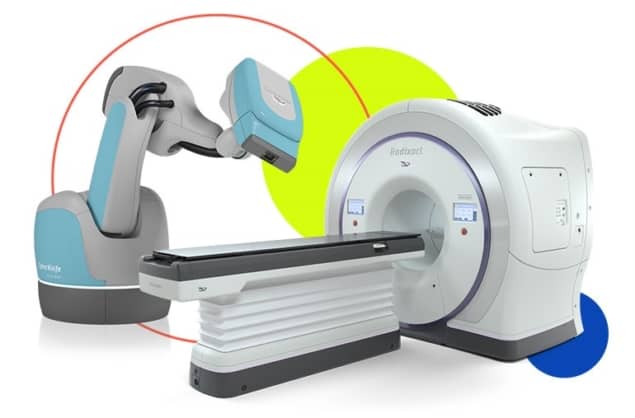Radiation therapy providers in the US need to start preparing now for the introduction of the Radiation Oncology Alternative Payment Model (RO-APM)

The Centers for Medicare and Medicaid Services (CMS) is betting on revolution rather than evolution as it gears up to rewrite the reimbursement rulebook for radiation oncology providers in the US. Starting 1 July 2021, the Radiation Oncology Alternative Payment Model (RO-APM) will enable CMS to gather evidence – at scale – on an all-new “financial infrastructure” for radiation oncology services in the US – and crucially whether an alternative payment structure preserves or enhances the quality of care for cancer patients while reducing annual Medicare expenditures.
The RO-APM trial, which runs through to the end of 2025, is an ambitious and broad-scope undertaking, with participation mandatory for selected institutions. Under the model, CMS will reimburse participating facilities using an episode-based (i.e. bundled) payment scheme, with the trial cohort comprising approximately 950 US physician group practices (PGPs), hospital outpatient departments and free-standing radiation therapy centers from randomly chosen zip codes.
In this way, reimbursement is matched to a patient’s cancer diagnosis and covers radiotherapy services furnished in a 90-day “episode” for the 16 cancer types meeting the RO-APM criteria – a significant departure from the current fee-for-service model for radiation oncology in which the bulk of compensation is linked to treatment modality and the number of radiotherapy fractions.
No time to lose
If that’s the long-run regulatory and financial context, the operational implications for radiation oncology providers are already front-and-center – or at least they should be. “The clock is ticking down to the RO-APM, so burying your head in the sand is not a credible plan,” cautions Shawn Prince, senior director of patient access at US radiotherapy equipment vendor Accuray.

In other words, it’s vital that radiation oncology clinics make the most of the next six months to prepare fully for the introduction of the RO-APM. “If the care providers don’t come to grips with the details of the new model – the nuances of the billing and coding requirements, for example – there’s a real risk they’ll leave significant amounts of money on the table,” Prince adds.
With this in mind, the patient access team at Accuray has put together a dedicated RO-APM project management tool with phased action plans for all members of the cross-disciplinary radiation oncology team, while also highlighting the pivotal role of oncology information systems and electronic health records in supporting the transition. That core reference document is backed up by sustained community engagement and education – for example, the recent Physics World webinar Medicare Radiation Oncology Alternative Payment Model: What You Need To Know.
“We have specialist resources and deep domain knowledge at Accuray that will help our customers better prepare for the RO-APM,” says Prince. What’s more, that knowledge-share extends to prospective customers. “Our radiotherapy solution is unique and aligns well with the RO-APM framework, where payment is based on diagnosis rather than the treatment modality,” Prince adds. “If you’re a clinic that is considering adding or replacing linear accelerators, we’re keen to talk further about how Accuray products can support your program within the RO-APM.”
The new rules of radiation oncology
At the clinical sharp-end, meanwhile, the day-to-day aspects of the RO-APM will, for the most part, be managed by a mix of clinicians, the nursing team, radiation therapists, as well as staff in billing and administration functions. More broadly, the all-inclusive payment that participating care providers will now receive (in place of fee-for-service) means that workflow efficiency will become a defining mantra – and the only way for clinics to succeed financially in the long term. “Under the RO-APM, the focus is going to shift decisively towards the total cost of delivering care,” says Prince. “The more efficient your radiotherapy program, the better the financial experience you will have.”
Expect greater emphasis, for sure, on the latest time-driven activity-based costing (TDABC) models. These tools enable radiation oncology providers to build a macro picture of capital expenditure (e.g. the cost of their linacs, imaging systems, software, QA tools and related medical supplies) and operational costs (e.g. staff salaries, service contracts and the like). From here, it’s a short step to drill down to a more granular view of per-patient cost-of-care and workflow efficiency for different treatment modalities – i.e. intensity-modulated radiation therapy (IMRT) versus volumetric modulated-arc therapy (VMAT) versus proton-beam therapy versus hypofractionated procedures such as stereotactic radiosurgery (SRS) and stereotactic body radiotherapy (SBRT).
Clinical outcomes being equivalent, the direction of travel within the RO-APM points towards radiotherapy modalities that deliver improved patient experience, increased patient throughput and reduced cost of care. All of which appears to sit well with Accuray’s emphasis on hypofractionated and ultrahypofractionated radiotherapy schemes – increasing the dose per fraction to enable significantly fewer overall treatments. A case in point is Accuray’s Radixact Treatment Delivery System, a helical radiotherapy platform that employs a continuously rotating gantry and unique dynamic collimation system to enable highly conformal dose delivery to diverse tumour sites throughout the body.
Radixact has recently been upgraded to incorporate motion-tracking and correction algorithms (collectively known as Synchrony) from Accuray’s flagship CyberKnife Treatment Delivery System, a robotic radiotherapy platform widely deployed in treating a range of disease indications using SRS and SBRT. This enhanced capability means that the Radixact System with Synchrony is now able to track and synchronize the delivery beam to the target position as the tumour moves. In effect, dose is delivered continuously to the moving tumour target – with the accuracy and precision required for hypofractionated radiotherapy (i.e. tight margins and steep dose gradients) as well as for standard radiotherapy procedures.
“Efficiency, efficiency, efficiency – that’s the name of the game in the RO-APM,” notes Prince. “That’s good news for radiotherapy systems like Radixact which enable clinics to rapidly scale their patient throughput on an annualized basis.”
Hypofractionate to accumulate
The RO-APM trial will run through to December 2025. If, after that time, significant cost savings accrue for CMS – as seems likely – it’s inevitable that other US healthcare payers will also migrate away from the current fee-for-service model in radiation oncology to a bundled payment scheme. “In my view,” says Prince, “the RO-APM will ultimately fast-track adoption of hyprofractionated and ultrahypofractionated radiotherapy, yielding enhanced efficiencies across the radiation oncology ecosystem – at the machine-level and right through to regional and nationwide healthcare systems.”
For now, though, Accuray remains focused on the near-term operational challenge of getting its customers up to speed for the launch of the RO-APM next summer. “Our specialist training and support on the RO-APM adds a lot of value,” Prince concludes. “The calculus is simple: if your radiation oncology program is successful, Accuray is successful.”
- For further information, see Accuray’s on-demand webinar Medicare Radiation Oncology Alternative Payment Model: What You Need To Know.




